The human mind is a canvas of infinite possibilities, where ideas can take shape not just in words, but in images, patterns, and spatial relationships. This vast cognitive landscape is the province of visual thinking, a way of processing information that has altered our understanding of how some of us learn, solve problems, and interact with the world.
From the revolutionary work of Temple Grandin to the innovative classrooms of today, discovering strategies for visual thinkers has evolved from a specialized approach to a widely recognized and implemented educational methodology.
Visual thinking strategies have become a cornerstone of modern cognitive science and educational theory thanks in large part to Temple Grandin’s book, Visual Thinking, published by Penguin Random House. In her book, Grandin, who has taught a livestock handling course at Colorado State University for more than 30 years, provides vivid examples of how visual thinkers process information using pictures and objects.
The exploration of verbal and visual thinking reveals a spectrum of cognitive styles that defines human thought. Embracing cognitive diversity can revolutionize education and communication by providing greater understanding of the unique traits of visual thinkers and examining the interplay between visual and verbal processing.
Whether you’re an educator looking to enhance your teaching techniques, a parent seeking to understand your child’s learning methods, or someone who is simply fascinated by the intricacies of the mind, taking a glimpse into the world of visual thinking promises to expand your perspective and inspire new ways of engaging with ideas.
Understanding Visual Thinking
Visual thinking describes a cognitive approach where individuals process information predominantly through mental imagery and spatial relationships rather than relying solely on verbal or sequential methods.
Visual spatial abilities are a key component of visual thinking, allowing individuals to manipulate vivid mental images and understand spatial relationships. In Visual Thinking, Grandin writes visual thinkers “see images in their mind’s eye that allow them to make rapid-fire decisions,” and enable creative problem-solving.
Visual and Verbal Thinking Exist on a Continuum
Individuals typically fall somewhere on a continuum between visual and verbal thinking, leaning more toward one style over the other. However, it’s important to recognize that skills and strengths can be developed on either end of this spectrum, regardless of one’s predominant thinking style. In educational settings, particularly in group learning environments, it’s beneficial for educators to be aware of students’ positions on the visual-verbal spectrum and tailor their instructional methods accordingly. This approach acknowledges and respects the diversity of learning preferences and ensures that every student receives personalized support and opportunities for growth based on their unique cognitive strengths and needs.
Traits of Visual Thinkers
- Visual thinkers often rely on images, diagrams, and spatial arrangements to comprehend complex concepts, leveraging their strengths in spatial reasoning, pattern recognition, and mental rotation of objects.
- They may even retrieve memories or make associations as if they’re watching a detailed movie in their heads.
- Visual thinkers excel in tasks requiring attention to detail, artistic expression, and visual memory.
- Visual thinkers also tend to excel in tasks that require visual spatial skills, such as architecture or graphic design.
- Highly visual thinkers may struggle in conventional educational settings designed primarily for verbal learners, experiencing challenges in social interactions and with traditional teaching methods.
Traits of Verbal Thinkers
- Verbal thinkers process information using words. They are more likely to think about things in a linear order and work sequentially.
- They usually feel more comfortable in social situations due to their conversational skill set.
- They often excel in verbal reasoning, reading comprehension, debating and argumentation, memory for words and facts, oral communication, and storytelling.
Identifying your student’s strengths on this continuum is an important step in providing personalized instruction that meets educational goals.
Educational Theories and Frameworks
How can instructors teach effectively when every individual has different learning preferences and identifies in varying degrees with the visual/verbal thinking continuum? The keys are personalized learning, challenging instruction, and mindful observation. These frameworks help meet students where they are and give us the visual thinking tools to support deep understanding.
Personalized learning, where instructors are dedicated to adapting their teaching methods to meet the individual needs of each student, is highly effective and creates an optimal learning environment. This approach recognizes that students thrive when they have access to diverse instructional strategies that cater to different learning preferences and abilities. By offering multiple modes of representation—for instance, incorporating more images and visual input to support visual thinkers—educators empower students to make meaningful connections between concrete concepts and abstract ideas. This holistic approach not only enhances comprehension but also fosters deeper engagement and active participation in the learning process.
Central to effective teaching is maintaining a balance between challenge and support. Learning is indeed a dynamic process that requires a level of difficulty to stimulate intellectual growth and curiosity. However, educators must carefully gauge the level of challenge to prevent students from becoming overwhelmed or frustrated. This nuanced understanding necessitates ongoing assessment and feedback mechanisms to monitor student progress effectively. By continuously assessing how students are navigating their learning journey, teachers can adjust the pace and complexity of instruction to align with each student’s unique learning pace and cognitive development.
In achieving this personalized approach to education, it’s crucial to avoid over-reliance on standardized assessments or categorizations. While personality tests, learning styles tests, IQ tests, etc. may help start the process of learning about your students, they can be a crutch that puts your students in a box if you rely on them as your source of truth rather than observing your students doing their work, having them teach things back to you, and asking them how they made connections in their learning. This student-centered approach not only respects individual diversity but also cultivates a supportive learning environment where every student feels valued and understood.
Nuances and Challenges of Embracing Cognitive Differences
Anyone who has taught more than one student or raised more than one child knows that there are differences in how they discover things, learn concepts, ask questions, and the speed at which they learn. In the past, we were taught that different parts of the brain were used for different purposes and independently of each other. While the research is ongoing, we now know that while there are patterns in how different parts of the brain are used by larger groups of people, the brain’s networks are interrelated and capable of being used for many different things.
Throughout history, researchers have been searching for a way to quantify intelligence. It seems like with each new finding, hypothesis, book, or TED talk comes a prescription for applying their theories that include giving kids a test, or conducting an inventory of students to fit them into the latest box of intelligence type, learning style, or personality style.
However, many theorists don’t fully support the use of their work for specific interventions but rather recommend more broad-based uses of their work in educational settings. For example, renowned psychologist Howard Gardner has never put forth an educational recipe in response to his Multiple Intelligence theory. At most, he has indicated some general implications that are consistent with the theory (including individualizing education and approaching topics through multiple entry points).
Recognizing the uniqueness of each child while appreciating the commonalities among them is essential in educational settings. Ideally, educators engage with each student individually to tailor challenges that encourage them to construct their own understanding of concepts. This approach involves utilizing diverse methods to illustrate and demonstrate learning outcomes, ensuring that students can articulate not only what they have learned but also how they arrived at their conclusions. Such personalized interactions foster a supportive environment where every child can thrive academically and develop a deeper appreciation for their own learning process.
Practical Applications in Teaching
Understanding visual thinking and educational theory is one thing but applying that knowledge to your instruction is another. The secret is to break it into three essential parts:
- Identify and adapt to the student’s cognitive strengths
- Incorporate an array of instructional techniques
- Encourage parental involvement
Let’s look at some examples that will help you take what you know and turn it into an effective teaching strategy.
Strategies for Identifying and Adapting to Students’ Cognitive Strengths
One way to identify a student’s strengths is through cognitive assessments, although these are not always necessary for effective teaching. What is essential is developing a keen awareness of what constitutes strengths and weaknesses across various cognitive skills. To achieve this, become a student of your student and actively observe their preferences and activities—such as reading, drawing, or engaging in discussions. Become a partner with your student in the journey to identify their strengths and preferred learning methods and ask them questions about what they feel works the best. Incorporating your findings into their learning experience creates a supportive environment that encourages growth and academic achievement.
It’s also important to foster a safe yet challenging learning environment. Adapting instruction to meet individual needs should not compromise academic rigor but rather enhance it by tailoring time requirements and deadlines to accommodate students’ learning pace and skill development. This approach not only promotes student engagement but also nurtures a sense of confidence and achievement in their educational journey.
Importance of Flexibility in Instructional Methods
Flexibility in teaching is not just a beneficial approach but a crucial necessity when it comes to accommodating students with cognitive differences. We know that individualized learning can improve performance and allow for the maximum development of student abilities. Both hands-on experiences and engaging the mind are necessary for learning, and some students require information to be presented via multiple modalities to learn effectively. Using multiple modalities provides a way for the student to test and then retest their ideas.
It is also important to remember that there will be some differences between the skills the student needs for successful academic performance and success in life and career. Using a variety of instructional methods provides exposure and the opportunity to practice multiple skills.
Examples of Effective Teaching Practices Using Multiple Modalities
- Using a video that includes speech, images, music, and text
- Having the student construct a model with verbal instructions
- Having the student read a book that contains text, images, and diagrams
- Combining verbal teaching with a multimedia presentation, and then following up with a real-life application
- Playing educational games
- Completing a group project that requires communication between team members and producing an end product
Every student learns uniquely, and this diversity requires educators to adapt their methods to meet individual needs effectively. Whether it’s adjusting the pace of instruction, modifying the presentation of material, or offering alternative assessments, flexibility ensures that all students, regardless of their cognitive profiles, have equal opportunities to succeed.
How the Demme Learning Philosophy Works for Every Cognitive Profile
Demme Learning’s overarching philosophy is expressed in our vision of building lifelong learners. This is done through encouraging parental engagement, meeting the student where they are, and incorporating multiple modalities.
Engaging with your student helps you fully understand their unique abilities and leanings. It enables you to encourage progress at the student’s individual pace without focusing on grade levels, and it makes room for instruction methods that allow students to explore and learn in ways that meet their individual needs and maximize their learning.
We encourage instructors to adapt to all students, including those with visual learning preferences, by showing them concepts in multiple ways, using tangible, multisensory methods (such as learning math using manipulative blocks), expressing the concept through writing, and asking questions and encouraging them to teach the material back to you.
Math-U-See
Our Math-U-See program uses a combination of instructional videos and written lesson instructions that contain illustrations and examples. This allows the student and instructor to interact with the lesson concepts using multiple modalities.
For concepts ranging from number recognition and counting through quadratic equations, our manipulatives provide concrete representations, context, the ability to “experience math,” and the ability for the student to test hypotheses.
Instruction and exploration of concepts in the Math-U-See Curriculum centers around the build, write, say process. This process involves:
- Build – modeling concepts with the manipulatives,
- Write – simultaneously writing the mathematical symbols, and
- Say – verbalizing the reasons behind both.
For example, let’s say your student is being introduced to the concept of addition with regrouping. A traditional approach might be to simply write the problem 49+18 and tell them to write a one above the four to show they are regrouping ten from the units or “ones” place. With the Math-U-See build, write, say process, you would still write the problem, but then you would also model it with the manipulatives: four 10-blocks and one 9-block to represent 49, and then one 10-block and an 8-block underneath to represent 18. Combining the 9-block and the 8-block to show addition would result in 17 (represented by a 10-block and a 7-block to show the sum). It would be clear from the model that 17 exceeds the maximum of nine allowed in each place value. So then you can physically move the 10-block of the 17 above the four 10-blocks of 49 to show the regrouping of the 10-block to the tens place. You then write the one above the four in the written representation. All the while, you are verbalizing the explanation. The student simultaneously sees the model, including the changes in it throughout the process, how that concrete change is represented in the written problem, and hears the reasoning.
Incorporating multiple modalities allows the student to access the information in the manner that they prefer but also maximizes retention.
Finally, a variety of worksheet types incorporating symbolic problems, word problems, and unique applications allow students to practice and demonstrate their learning in various ways.
Spelling You See
Spelling You See’s four activities (daily huddle, chunking, copywork, and dictation) allow students to interact with each weekly passage in multiple ways to foster a visual memory of spelling. Throughout the lesson, instructor engagement and support allow adaptation to meet the unique needs of the student.
Analytical Grammar
Grammar is traditionally taught via memorization of definitions and rules. While these are important, they provide little reference for the visual thinker. The incorporation of diagramming in Analytical Grammar provides a visual representation of the sentence structure and patterns together with the relationship between the parts of speech. This is presented in an easy-to-follow series of questions called “The Process” that allows students to incrementally learn how to diagram increasingly complex sentences.
In addition, instructional “Tips for Success” provide guidance on adjusting the progression through a lesson to adapt to meet the individual student’s needs.
WriteShop
Writing can be challenging for any student. However, WriteShop lessons appeal to multiple modalities, so writing isn’t strictly a verbal process. These include:
- Genre models
- Skill-developing games and activities
- Preplanning/brainstorming maps
Parents and instructors are encouraged to provide help and support throughout the writing process based on the individual student’s needs. These may include:
- Scribing for the student,
- Suggesting writing topics or providing prompts,
- Brainstorming together,
- Using included adaptations from “Parents Say…,” “Smaller Steps,” and “Flying Higher” sections, and
- Flexible scheduling options.
Shaping the Future of Learning Through Cognitive Diversity
Visual thinking is more than just a fascinating concept—it offers a more intentional way to approach education, problem-solving, and communication. By recognizing and embracing the various ways people process information, we open doors to more inclusive and effective learning environments.
Incorporating visual thinking strategies alongside traditional verbal methods allows instructors to create effective, multi-modal learning experiences that cater to a wide range of cognitive learning types. These strategies and approaches point to a future where:
- Personalized learning becomes the norm, not the exception. As we continue to understand and appreciate cognitive diversity, educational systems will evolve to flexibly accommodate all thinking styles.
- Technology and curriculum design advance hand-in-hand. Future educational tools and resources will likely be adaptive, automatically adjusting to individual cognitive preferences and learning paces.
- The definition of intelligence and academic success broadens. By valuing different cognitive preferences equally, we engage a more diverse range of thinkers and problem-solvers in various fields.
Demme Learning’s approach, as demonstrated through our academic philosophy and the products and resources we offer to support it, is just the beginning. As we continue to explore and understand the many ways the human mind works, it’s clear that the future of education lies in cognitive diversity.
By embracing the full spectrum of thinking preferences, we’re preparing students for academic success and equipping them with the tools to thrive in an increasingly complex and interconnected world.
Watch our Demme Learning Show episode with Dr. Temple Grandin to gain more insights and strategies for supporting visual thinkers in education and beyond.




Leave a Reply